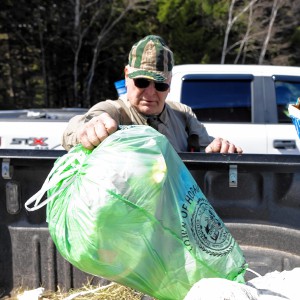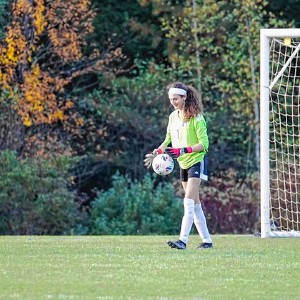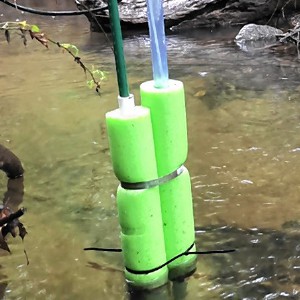Granite Geek: How much snow did we get? It’s harder to say than you think
| Published: 01-25-2023 6:05 PM |
Now that winter in New Hampshire is finally looking like winter in New Hampshire, we can indulge our favorite pastime of asking “How much snow did you get?” to everybody in sight, while hoping that we got more.
Alas, I’m here to tell you that the only correct answer is, “It depends.”
Consider this: I had 7 inches of snow at the official snow-measuring spot in my yard Sunday when the storm began. By 7 a.m. Monday, another 4 inches had fallen as determined by my special snowfall-measuring board, but on the ground I didn’t have 11 inches (7 inches plus 4 inches) – I only had 10.
By 7 a.m. Tuesday another 5 inches had fallen but on the ground I didn’t have 16 inches of snow (the original 7 plus 4 plus 5) nor 15 inches (Monday’s 10 inches plus 5) – I only had 13.
Where did the extra go? The temperature was below freezing and there was no sunshine to speak of during this period, so it didn’t melt. It got squashed, or compacted in official terminology.
Snow has weight, and every flake that falls compacts the snow under it. This means that total snow depth from a storm depends on how often you measure during the course of the storm.
Did the storm dump an extra 9 inches on my property – the number I get from adding the two morning totals – or just 6 inches, the number I get from measuring how much more it had Tuesday compared to Sunday?
Either is correct or both are correct – or both are wrong, I suppose – depending on how you look at it. There isn’t any single correct answer.
Article continues after...
Yesterday's Most Read Articles
 Mother of two convicted of negligent homicide in fatal Loudon crash released on parole
Mother of two convicted of negligent homicide in fatal Loudon crash released on parole
 Students’ first glimpse of new Allenstown school draws awe
Students’ first glimpse of new Allenstown school draws awe
 Pay-by-bag works for most communities, but not Hopkinton
Pay-by-bag works for most communities, but not Hopkinton
 ‘Bridging the gap’: Phenix Hall pitch to soften downtown height rules moves forward
‘Bridging the gap’: Phenix Hall pitch to soften downtown height rules moves forward
 Regal Theater in Concord is closing Thursday
Regal Theater in Concord is closing Thursday
 ‘We’re just kids’: As lawmakers debate transgender athlete ban, some youth fear a future on the sidelines
‘We’re just kids’: As lawmakers debate transgender athlete ban, some youth fear a future on the sidelines
The National Weather Service is aware of this issue, of course. It has standards for snow measurement, including one that says snowfall should be tallied on level, flat surface away from any structures, and the surface should be cleared four times a day when it’s snowing, but not more often than that. Pretty arbitrary, but at least everybody is consistent.
And that’s doesn’t even consider geographic variability. Just in my yard on Tuesday morning there were spots with 11 total inches and spots with 14, despite the lack of winds creating drifts.
So those town-wide snowfall tallies you see on TV listed down to the half inch? Feel free to scoff: The scientific term for accurate-looking data that ignores the messiness of reality is “false precision” and you can’t get much falser than that.
There is one way to get around the problem, called snow-water-equivalent. Basically, you melt the snow and see how much water it contains; that number stays consistent regardless of how much the snow has compacted.
Consider my numbers. The snow lying in my yard Sunday morning melted down to 0.60 inches of water. The snowstorm though Monday morning added 0.85 inches of water and the snowpack total that morning was 1.44 inches, right on tally. The next day’s snowfall added another 0.47 inches of water and the total melted from snow on the ground was 1.85 inches, which is pretty much what you’d expect.
So don’t worry about the depth of the snow we’ve gotten and will get – just go out and enjoy it. And you really want to query your friends, this is what you should be asking: “How much snow did you get, as melted down to water?”
By the way, if daily measurement of snow and rain sounds like fun, check cocorahs.org/. They always need more participants.


 With less than three months left, Concord Casino hasn’t found a buyer
With less than three months left, Concord Casino hasn’t found a buyer Kearsarge Middle School drone team headed to West Virginia competition
Kearsarge Middle School drone team headed to West Virginia competition Phenix Hall, Christ the King food pantry, rail trail on Concord planning board’s agenda
Phenix Hall, Christ the King food pantry, rail trail on Concord planning board’s agenda Granite Geek: Forest streams are so pretty; too bad they’re such a pain to measure
Granite Geek: Forest streams are so pretty; too bad they’re such a pain to measure
